
Barite ore contains a variety of gangue minerals, including quartz, calcite, dolomite, etc. These gangue minerals are easily activated in flotation separation process, and have similar surface properties to barite, making separation difficult. Therefore, enlarging the floatability difference between barite and gangue minerals is the key to barite flotation separation. Flotation reagents can change the surface properties of minerals and enhance the hydrophobicity difference between minerals, so as to realize the separation of barite. In this article, we will introduce barite collectors and inhibitors.
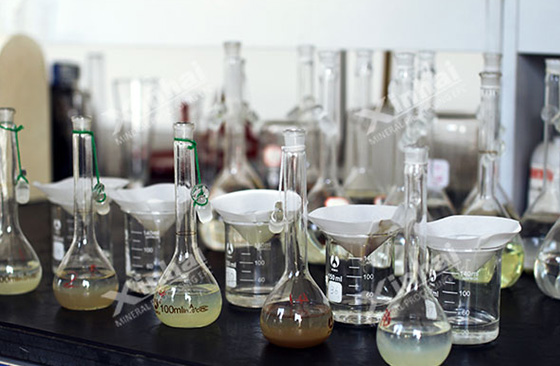
Barite flotation collectors can be divided into fatty acid collectors, amine collectors, alkyl sulfate collectors, phosphonic acid collectors, combined collectors, etc.
Fatty acid collectors are common collectors for barite ore flotation, including oleic acid, sodium oleate, oxidized paraffin wax soap, etc. The carboxyl functional groups of fatty acids can form complexes with metal ions on the surface of various minerals, and can form insoluble compounds with alkaline earth metals and heavy metal ions. It has the characteristics of strong collection capacity and less dosage of chemicals, but the flotation effect is easily affected by calcium and magnesium ions.
Amine collectors belong to the category of cationic collectors. Common amine collectors include alkylamines and sulfonated butyramides, which mainly act in the form of electrostatic adsorption, semimicelle adsorption, molecular adsorption, and exchange adsorption. Amine collectors are often used in the barite reverse flotation process, which has high requirements on the slime condition.
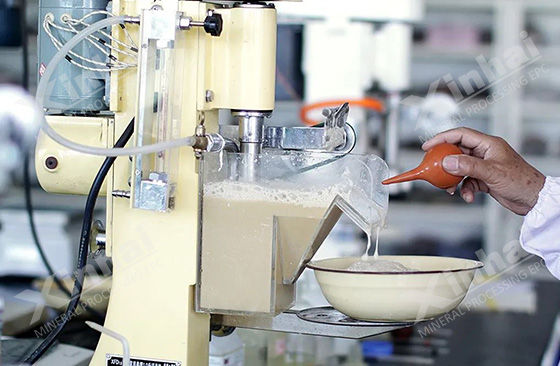
Alkyl sulfate collectors are anionic collectors, including sodium dodecyl sulfate, sodium dodecylsulfonate, sodium dodecylbenzenesulfonate, etc. The adsorption of this type of collector on barite is mainly chemical adsorption, which is less affected by the change of pH value. Generally, such collectors are seldom used alone, and are often combined with fatty acid collectors to improve the selectivity and collection capacity of collectors.
Phosphonic acid collectors such as alkyl α-hydroxyl 1,1 bisphosphonic acid, α-amino bisphosphonic acid and β-amino alkyl phosphonic acid have better flotation recovery effect onbarite in weakly alkaline environment. Well, both physisorption and chemisorption exist on the barite surface.
In barite flotation, two or more agents with strong collector capacity and good selectivity are often used in combination. The more common combination is the combination of fatty acid collectors and alkyl sulfate collectors. Combined collectors are used in flotation, and the agents can promote each other and play a synergistic effect.

Barite flotation inhibitors include inorganic inhibitors, organic inhibitors, combined inhibitors, etc.
Inorganic inhibitors include sodium silicate, sodium fluorosilicate, sodium hexametaphosphate and sulfate. In positive flotation, sodium silicate is often used to suppress gangue minerals such as quartz, calcite and feldspar under weakly alkaline conditions. In reverse flotation, sulfate and water glass are used to suppress barite. Water glass is hydrolyzed in solution to form strong hydrophilicity, which can be adsorbed on the surface of gangue minerals to enhance its hydrophilicity. And it can hinder the interaction between collectors such as oleic acid and their surface, and reduce the buoyancy of gangue minerals. Metal salts can promote the hydrolysis of sodium silicate and enhance the hydrophilicity of sodium silicate. Therefore, sodium silicate is often mixed with metal salts to reduce the amount of sodium silicate.
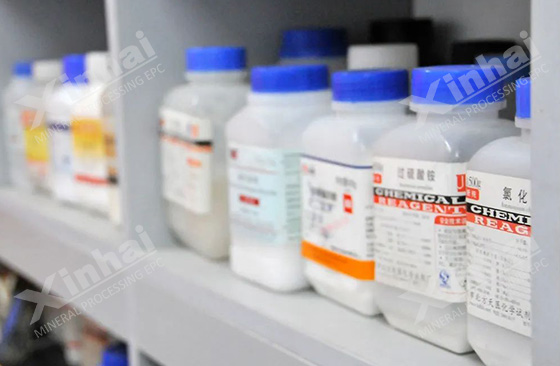
Organic inhibitors are often polymers containing polyhydroxyl or polycarboxyl groups, such as starch, dextrin, carboxymethyl cellulose, xanthan gum, and tannic acid. Citric acid can promote the dissolution and shedding of Ca2+ on the surface of fluorite, reduce the active sites of sodium oleate adsorbed on its surface, reduce the buoyancy of fluorite to realize the selective separation of barite and fluorite. Organic inhibitors have strong inhibitory effect, but poor selectivity. When used in combination with inorganic inhibitors, better separation effect can be obtained.
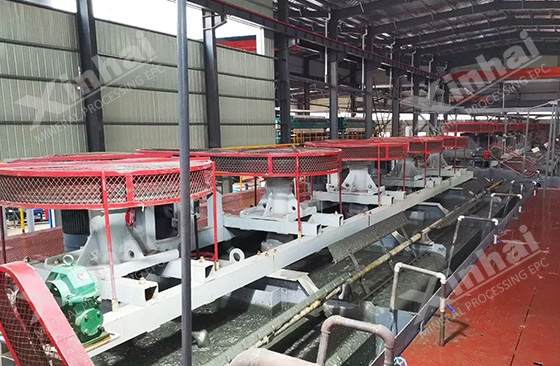
In the flotation of barite and quartz, mica and feldspar and other gangue minerals, the combination of inorganic inhibitors is often used to suppress gangue minerals, such as the combination of water glass and sodium hexametaphosphate, the combination of water glass and sodium fluorosilicate, water Glass combined with potassium aluminum sulfate. Combination inhibitors can improve the problems of large consumption of agents and poor selectivity of single inhibitors. Through the synergistic inhibitory effect between agents, the inhibitory effect on certain minerals can be strengthened, the selection efficiency can be improved, and the dosage of agents can be reduced at the same time. cost.
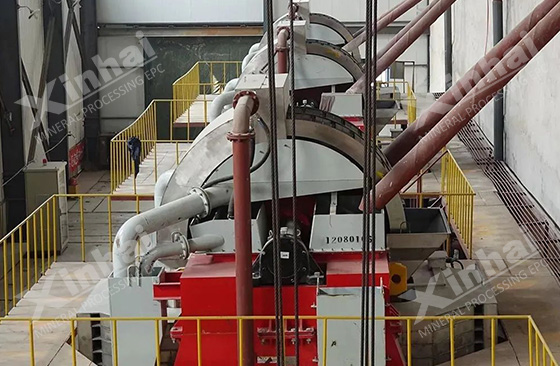
The above is about the content of barite flotation collectors and inhibitors. In actual production, the barite flotation agent system depends on the specific ore properties and components. Xinhai Mining recommends to conduct beneficiation tests first, and formulate a suitable barite beneficiation solution with scientific and reasonable means to avoid waste of resources and economic losses.
To find out more about our products and solutions, please fill out the form below and one of our experts will get back to you shortly.